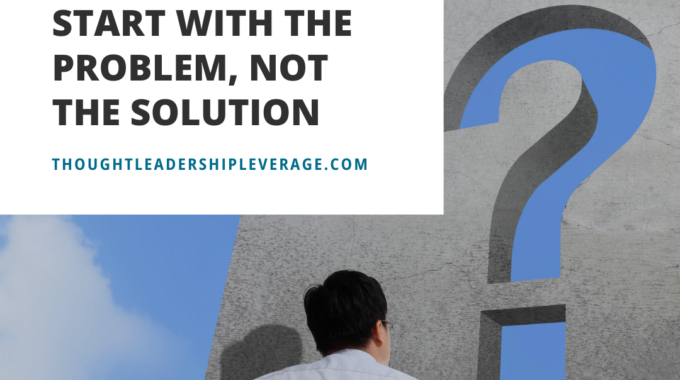Hey, thought leaders! I want to tell you about a powerful approach to thought leadership…
A Great Speech is not a Ginsu Knife

Remember the commercials for the Ginsu Knife? It could do everything! It could slice, it could dice, it could even cut a beer can in half (I prefer my beers whole, but I assume there must have been a demand for that somewhere). They even showed the knives chopping wood! Not only that, but by the end of the commercial they threw in 10 extra knives (but only if you CALL NOW).
So what does this have to do with speakers and thought leaders? Actually, more than you might think. I’ve witnessed far too many smart, savvy, and seasoned speakers make similar claims about the impact of their keynotes. Motivate the troops? It does that! Increase sales? Absolutely! Engage our customers? Not a problem! Get everyone in the audience to change their behavior? Of course!
Here’s the problem with that approach: while you may get the “gig,” the client will be disappointed. You have to manage client expectations about what a keynote does and what it doesn’t do.
A good speech does the following, nothing more and nothing less:
- It entertains. It’s fun and enjoyable for the audience. They laugh a bit, learn a bit, and they stay awake and lean in.
- It increases awareness. They now have a heightened sense of awareness of who you are and what your content is and does. It doesn’t mean they have to agree with you; it doesn’t mean they disagree with you. It means they know who you are and, at a high level, what your work is about and how it functions.
- It gives them a few things to ponder that they haven’t considered before. Not 42 concepts, 17 models, 14 principals and an appendix—a few things. Think of it this way, if someone were to randomly interview 20 folks that saw you speak over the last several months and ask them what 3 things they recall from the event, what do you think those three things would be?
Don’t keep throwing more at the audience than they can possibly digest and don’t promise the buyer that in 60 or 90 minutes you can cure all that ails them. Less is more. Manage expectations well. Do less, but do it better. After all, I don’t need a knife that cuts frozen vegetables, dices and slices, and chops wood. I need a knife that functions better than the other knives I’ve owned. Something high quality and that will last. You will have clients that are delighted, and engaged audiences that will want more.
This Post Has One Comment
Comments are closed.





I disagree.
1. Supermarket tests have shown that peoples interest choice phases out after 6 items. For an hours talk that’s a lot of topics.
2. When you give a talk if you a provide a summary of your points at the start your audience will hold its attention until they’ve heard what they want to hear from that summary. We all want value for our ticket money. It’s why muscians who play lots of songs in a gig hold the interest of the audience to the end when they play their biggest hit.
3. Todays audience is a lot smarter than a 1950’s group. It has been raised on social media sites where they’ve picked their followers based on their own interests. Daily they scan through various topics until they arrive at the topic that interests them on a paricular day. Twitter has recognised that – it’s why they have lists.